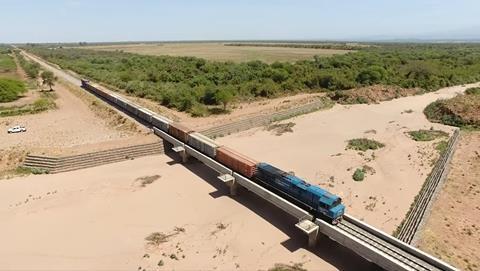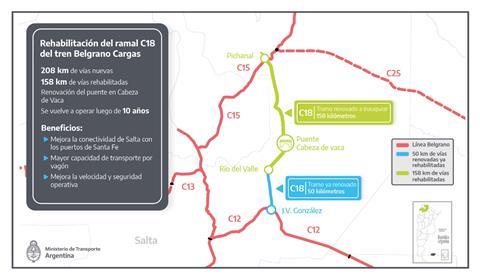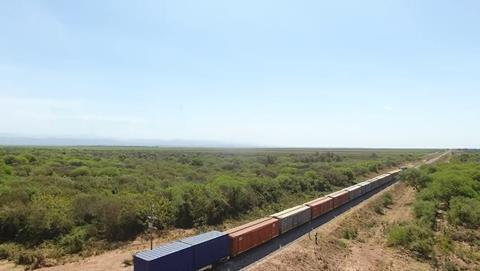
ARGENTINA: Trenes Argentinos Cargas has restarted freight services on a 158 km section of the Belgrano Cargas metre-gauge network in the north of the country after a 10-year hiatus.
The railway connecting Pichanal with Río Del Valle has reopened following extensive reconstruction. The inaugural train on September 29 carried sugar from producers located across Jujuy province.
The C18 line forms a corridor between JV González and Pichanal to the north. The first 50 km section at the southern end as far as Río Del Valle had already been reactivated following upgrading work over recent years. The route is part of the wider Belgrano system linking the Noroeste Argentino agricultural region with ports on the Paraná River in Santa Fe province.

As part of the reconstruction work carried out by Trenes Argentinos Infraestructura, bridges and culverts were rebuilt, the axleload was raised to 22 tonnes and the line speed was also increased. Completion of the renovation means that the Belgrano network now consists of 1 625 km of operational routes.
The network is a key element in the grain export business, and this traffic accounts for 36% of the total freight moved by Trenes Argentinos Cargas. TAC says it has carried 1·8 million tonnes of freight in the first three quarters of 2023, a 57% increase compared to the same period in 2019. The company has aspirations to restart freight traffic to and from Bolivia, having brought back international services to and from Paraguay in September 2022.

‘Each branch that we put back into operation opens more opportunities for thousands of people, means an improvement in the working conditions of producers who see railways as a more economical way to transport cargo, and the presence of railways also encourages those who want to start a business but see an obstacle in logistics costs’, said Minister of Transportation Diego Giuliano. ‘That is why our vision is to take the train further and further because they are the veins that give the strength back to our economy.’

















